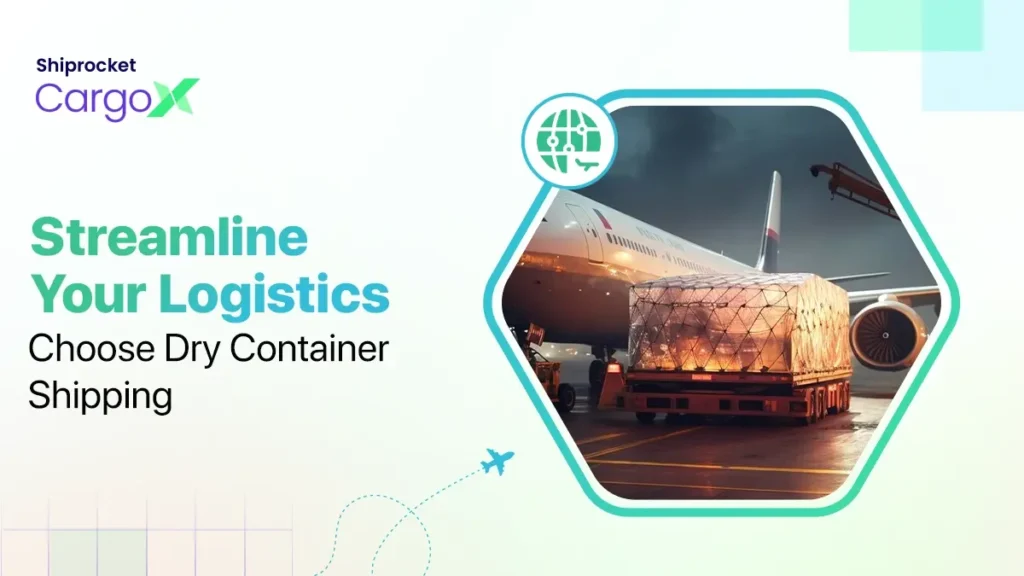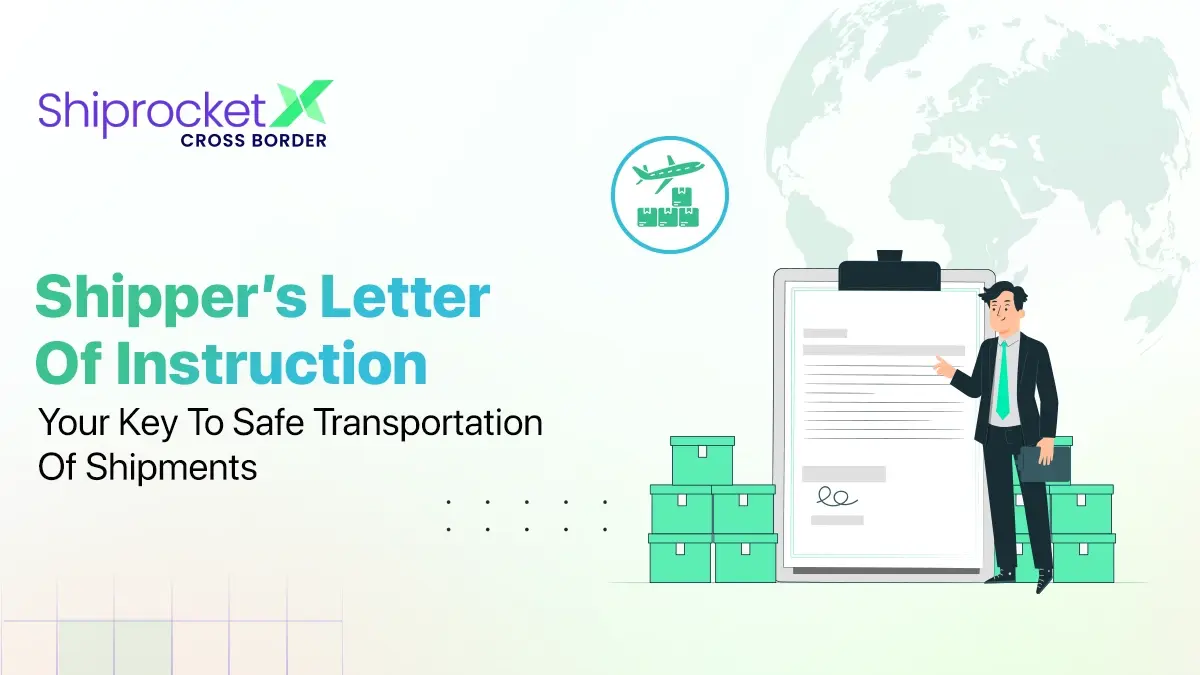Dry Container Shipping: Benefits and Selection Tips
- What is Dry Container Shipping?
- Benefits of Dry Container Shipping for Sellers
- How to Choose the Right Dry Container for Your Goods
- Figure out your cargo type.
- Decide whether to lease or buy the container.
- Examine the container’s condition.
- Analyse the age of the container.
- Consider the type and size of the container.
- See which container category suits your shipment.
- Get a cost estimate and compare the prices of the containers.
- Try to choose sustainable containers.
- Best Practices for Dry Container Shipping
- Conclusion
The global shipping industry relies heavily on cargo containers, which are also essential to the world’s economy, to transport goods across cities, states, or countries. There are various types of containers, and each one has its unique features.
One of the most commonly used types is the dry container, including General Purpose and High Cube containers. These uniform metal boxes can carry everything from electronics and clothing to perishable goods. Despite the variety of shipping container designs, 95% are classified as “dry van containers.” This article explores the benefits of dry container shipping and how to select the right dry container for your shipment.

What is Dry Container Shipping?
Dry containers (DC) are some of the most widely used types of containers in the world. These 20-foot and 40-foot dry cargo containers are built using aluminium or steel and are suitable for all kinds of cargo. Although aluminium containers hold a slightly larger payload than steel ones, steel dry containers have a larger internal volume.
The specific capacities and dimensions of dry containers can vary depending on their age, manufacturer, and owner.
Dry cargo shipping covers many commodities, from apparel and coal to dry fruits and computers, which can be shipped or transported in any dry container type. However, these containers are unfit for transporting perishable goods that require refrigeration.
Benefits of Dry Container Shipping for Sellers
Dry container shipping has a few considerable advantages in store for businesses, like:
- Weather resistant
Dry containers are built with sturdy, weather-resistant steel. Hence, they can protect your goods in bad or extreme weather conditions, including storms in the sea, heavy rains, or gushing winds. Plus, the sealant around the doors of these dry containers even helps make them waterproof.
- Secure shipping
These containers are a secure way of transporting your goods so that nobody can tamper with or steal the cargo. Many dry containers even have in-built locking mechanisms and factory-fitted high-security lock boxes that cover the padlock and protect it from interference.
- Eco-friendly containers
Dry containers are entirely environment-friendly, as you can use them repeatedly, which makes them reusable and sustainable.
- Marine protection
These containers are built keeping a full marine specification in mind, and are manufactured using corrosion-resistant Corten steel. They are protected with marine-grade paint and have a 28-mm marine ply floor, specially sealed and certified as rot- and vermin-proof material.
- Ventilation
Dry container shipping lets your cargo breathe, as these dry containers have additional ventilation to ensure condensation is not an issue during transit.
- Ease of use
Dry containers usually have high locking bars that make them easy for shippers to use. They can also be stacked for efficient storage.
So, now that you know how beneficial dry container shipping can be, you must also familiarise yourself with how to pick the best dry container for your goods.
How to Choose the Right Dry Container for Your Goods
You must go through this checklist of things to consider before investing in dry containers:
Figure out your cargo type.
Start by assessing what kind of cargo you are shipping. This makes all the difference in dry container shipping. You should choose a dry container that is the perfect fit for your shipment. For example, if you’re shipping machinery, you need a more sturdy and stable dry container that can carry the weight of the heavy metal structures.
Likewise, if you’re shipping goods that need extra care or special handling, such as hazardous or fragile items, select a dry container designed to transport these kinds of goods. If you’re planning to ship high-value items, such as jewellery, look for containers with added security features, like cam-lock doors or attached tracking devices. So, the nature of your products will determine the containers that will best match them.
Moreover, the size or dimensions of your shipment also play an essential role in the choice of your container. The bigger the cargo, the more space you’ll need to fit it.
Decide whether to lease or buy the container.
Invest in shipping containers if you need to use dry containers for multiple trades over a few years. Many firms provide container buyback facilities if the containers are no longer in use. Although they offer many long-term benefits, most businesses prefer renting dry containers instead of purchasing them.
However, if you want to lease containers, you may choose between the different types of container leasing agreements—long-term, one-way, short-term, or master lease—depending on your requirements. Leasing a container is a good idea if the requirements for your shipments keep changing, for instance, short-duration or emergency consignments. You then have no repair responsibility or maintenance, and it helps reduce capital investment.
Examine the container’s condition.
Begin by inspecting the sides and doors of the container to ensure it is suitable for safe dry container shipping. Then, check for any odours originating from the container. Also, see the container’s colour. You must only accept a container if you don’t find any dents or if the container’s exterior is appealing. It’s equally important to examine the floor for weak areas.
Once you have narrowed your selection to one or two dry containers, thoroughly inspect the finer details.
- Dry container roofs might have rust build-up in the corners because water pools in dents. Therefore, you must examine the roof before finalising the container.
- Check for cuts in the walls, as these can be hard to detect from the inside and may lead to future issues. You must also ensure the container walls are not curved or bent from any side. The top rails must be straight and in perfect condition.
- Make sure that the locking rods are straight and not bent. They should swing freely, and the doors should be easy to open and close. Also, check the gasket seals for any damage that may allow water to enter the container.
Analyse the age of the container.
A new cargo container is more expensive than a used or old one. You may use a new dry container for durability, stability, aesthetics, and customisation. Used cargo containers require more repairs and maintenance since they’ve been used for several years. They may be ideal storage solutions, but they need proper refurbishing and management for dry container shipping. Since used containers are more affordable, businesses with flexible cargo requirements often choose this option.
Consider the type and size of the container.
Cargo containers are usually available in sizes 10, 20, 40, and 45 ft. These dry containers are sturdy in design and offer maximum durability and rigidity. Owing to their limited capacity, companies rarely use them to transport commodities internationally.
However, there are mainly three types of dry containers in different dimensions and sizes, and they are a staple in the shipping industry:
- Standard Containers: These are the most common containers and can be used for various cargo types. They are available in 20-foot and 40-foot lengths.
- High Cube Container: The high cube containers are one foot taller than the standard ones and are available in 40-foot lengths. They are usually used to transport taller cargo.
- Flat Rack Container: Flat containers have no roof or sides and are suitable for extremely large (oversized) or oddly shaped cargo. They are available in 20-foot and 40-foot lengths.
See which container category suits your shipment.
Shipping containers are divided into three categories: one-trip, purpose-specific, and used cargo containers. These containers have varying quality, uses, and prices. You should make your choice based on your needs and budget.
Get a cost estimate and compare the prices of the containers.
Before you finalise a dry container, you must consider the cost. These charges are based on several factors, including the size of the container, the space needed, and the distance your shipment needs to travel. The cost will also depend on whether you choose a new or old container. The new ones will be more expensive than the used ones.
You may take these measures to cut your expenses and make dry container shipping more cost-effective for you:
- Optimise the space in the container by utilising its full capacity and avoid paying for unused space. You could combine small shipments in one container and share the cost with other shippers.
- Research alternate shipping routes that may be cheaper than the commonly used ones.
- Make sure you balance container costs with quality. Don’t simply pick the cheapest one, as it may compromise safety or quality. Damaged cargo will cost you more in the long run than a durable container. You may bear financial losses or tarnish your brand’s reputation due to damaged goods landing at your end customer’s doorstep.
Try to choose sustainable containers.
In this era of high eco-consciousness, businesses need sustainable approaches in all aspects, including shipping. So, opt for containers that are reusable and recyclable after their lifespan.
Another way to choose an eco-friendly container is to select one built from sustainable materials or one with eco-friendly features. In addition to these measures, you can maximise the space in the container to decrease the number of trips taken to transport your cargo, further reducing its carbon footprint.
Best Practices for Dry Container Shipping
There are certain rules and guidelines for dry container shipping, which the World Shipping Council (WSC) and International Chamber of Shipping (ICS) published for the safe transport of containers by sea routes in December 2008. The authorities created these rules to eliminate any risks to container vessels, their crews, and all other personnel handling the containers throughout the transit journey.
But who is responsible for safeguarding the cargo? Well, the foremost responsibility for safely transporting containers by sea is the containership operators’ hands. However, many other parties are involved in the transport chain concerned with these containers’ safe movement.
All these parties have a significant share of responsibilities, which the industry guidelines have clearly addressed. Those responsible for correctly packing, labelling, and weighing the cargo before it is loaded onto containers and accurately declaring the contents have an important role to play.
To avoid any problems, follow the global container rules. Use containers that meet worldwide ISO standards. Check how much weight you can put on them, as different companies and countries have limits. Ensure you have all the needed paperwork, like shipping lists and origin papers. This helps things run smoothly, avoiding delays or fines.
Conclusion
Dry containers are very commonly used in the shipping industry as they have the most durable and solid structure and suit almost all types of cargo, barring some exceptions like goods needing refrigeration while shipping. Dry container shipping, therefore, has many advantages for importers and exporters. These containers are secure, weather- and water-resistant, easy to use as well as load onto and unload from different vehicles, and well-protected for marine transport.
Choose a suitable dry container for your shipments based on its size, type, and added features or unique designs, keeping in mind best practices and compliance with international regulations.





